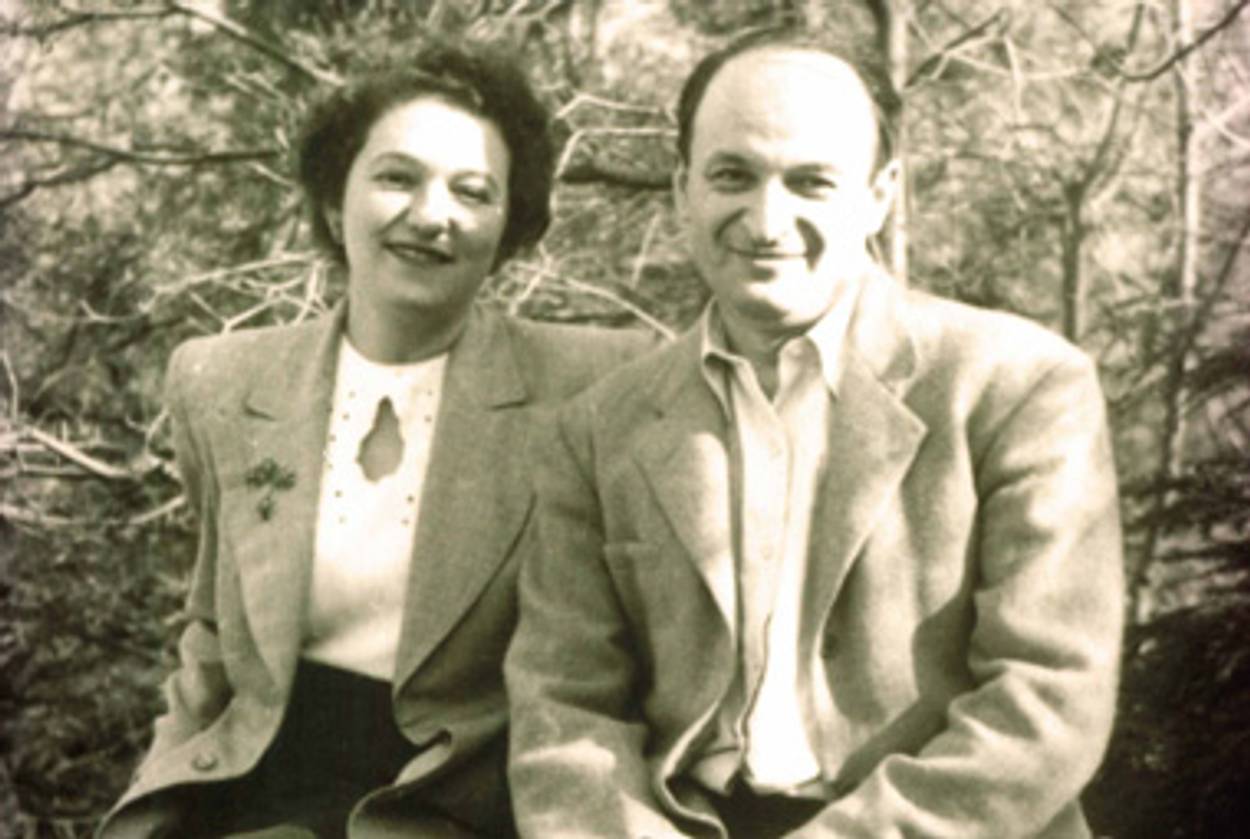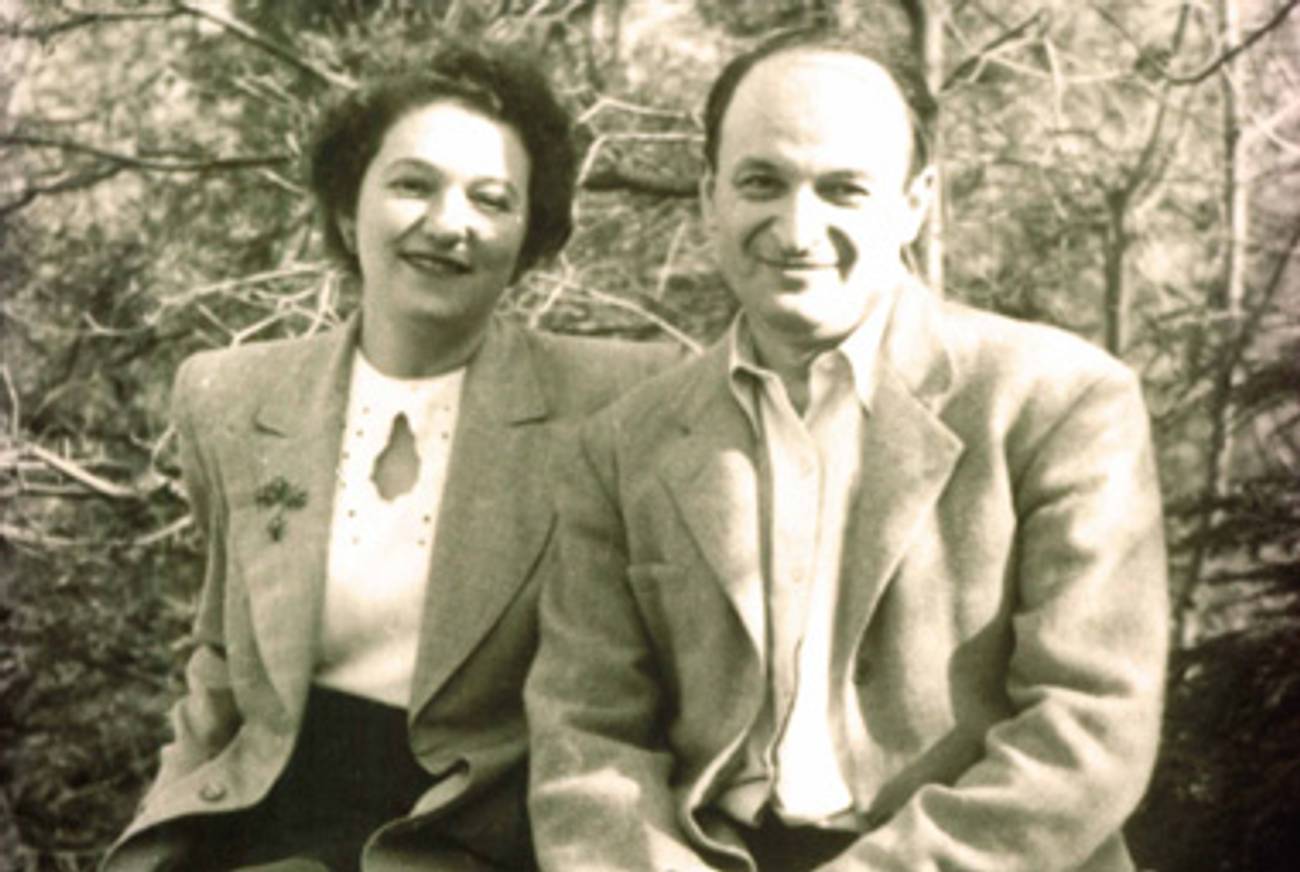A New Leaf
Seventy years after the release of his first book, the bestselling ‘As a Driven Leaf,’ Rabbi Milton Steinberg (posthumously) offers a sophomore effort




In 1939, the same year Scarlett O’Hara mourned her lost Tara on the silver screen, a prominent Conservative rabbi named Milton Steinberg published a near-500-page work of historical fiction—never, for reasons that surely have to do with anti-Semitism, made into a movie—set in the era of the Talmudic sages.
The novel, As a Driven Leaf, tells a grandly elaborated version of the story of Elisha ben Abuya, a historical personage whose excommunication on charges of apostasy in the second century is described in the Talmud. In Steinberg’s reading, Elisha is a progenitor of modern man, torn between faith and reason, group loyalty and assimilation. But where most rabbis would analyze those themes in an essay or sermon, Steinberg—the philosophically trained spiritual leader of the elite Park Avenue Synagogue in Manhattan and a disciple of Rabbi Mordecai Kaplan, the father of Reconstructionist Judaism—gives us cinematic visions of desert armies, crumbling temples, and even the occasional ripped bodice. At the end of the novel, Elisha, cast out by both the Romans and his own people, says goodbye to his remaining disciple, mounts his horse, and rides off into the distance.
“It’s so out of nowhere, so sui generis,” said Josh Lambert, a professor of Jewish literature at New York University and Tablet Magazine contributor. “It really doesn’t fit—unlike Henry Roth or most of the other [American Jewish] writers we can name from the same period, it doesn’t even seem to aspire to being a literary text. If someone wanted to place Steinberg in a literary tradition, it would probably go back to these very flat ‘life of Christ’ novels from the late 19th and early 20th century—with Steinberg saying, ‘We can do the same thing for Jewish history.’”
Not knowing what to do with it, Lambert said, critics have never paid the novel much attention. And yet, As a Driven Leaf has never been out of print; it remains so popular, in fact, that Steinberg’s publisher has taken the unusual step of posthumously releasing the rabbi’s unfinished second novel, The Prophet’s Wife, which comes out this weekend.
Rather than finding a place in the American Jewish literary canon, As a Driven Leaf has become part of an unofficial reading list shared by young adults from liberal Orthodox and traditional Conservative backgrounds. Along with books like Abraham Joshua Heschel’s The Sabbath and Chaim Potok’s The Chosen, an entire demographic, it seems, reads As a Driven Leaf by the end of college. “Just like every American reads Johnny Tremain or The Grapes of Wrath, it was assumed that everyone had read it,” said David Lerner, now a Conservative rabbi in Lexington, Massachusetts, of the novel’s ubiquity during his time at Ramaz, a Modern Orthodox high school in Manhattan. Lerner is 38; his father, Stephen Lerner, also a Conservative rabbi, is 70 and read As a Driven Leaf while in rabbinical school. Both Lerners still give or recommend the book to students.
The obvious reason for the novel’s endurance among young readers from observant backgrounds is that they can relate to its protagonist’s struggle to define his religious identity. But there is another layer, too, one that has not escaped Jewish educators who now teach the book: It brings to life a historical period central to Jewish thought but not much represented in literature. By putting new words in the rabbis’ mouths, and endowing them with personal lives, Steinberg turned the Talmudic sages into people. “How do you identify with Rashi?” asked Ron Gejman, a Columbia senior and Conservative day-school graduate who read As a Driven Leaf after his freshman year of college. “He’s this brilliant guy who you can’t possibly fathom. And you read Steinberg, and you get this glimpse into these few scholars’ lives, and they have the same problems you have, the same struggles you have. It means the traditions were molded and I can mold them too.”
Steinberg died of heart failure at the age of 46 in 1950. He left behind an incomplete 400-page manuscript of The Prophet’s Wife, which his sons David, the president of Long Island University, and Jonathan, a historian, have been trying to figure out what to do with since their mother’s death four decades ago. Over the years, David said, they approached luminaries including Potok, Elie Wiesel, John Hersey, and Hermann Wouk to write an ending for the novel; some of them tried, but ultimately, according to David, “they all said, ‘I can’t finish another man’s work.’ ” Meanwhile, the manuscript sat in the archives of the American Jewish Historical Society, its existence known to very few; the entry on As a Driven Leaf in Lambert’s anthology of American Jewish fiction, published early last year, notes specifically that Steinberg never wrote a second novel. Behrman House, Steinberg’s publisher, will release The Prophet’s Wife on Sunday, Steinberg’s 60th yahrtzeit.
In part, no doubt, because it is a fragment, The Prophet’s Wife lacks the allegorical clarity of As a Driven Leaf. It takes up the figure of Hosea, who, according to the book of prophecy from the eighth century BCE that bears his name, was commanded by God to marry a harlot so that he would understand the adultery Jews commit when they are not true to their creator. In Steinberg’s version, Hosea is a respectable but spineless scribe who falls under the influence of the prophet Amos, who has been imprisoned for decrying the corruption of the local Jewish kingdom. He returns home only to find his beautiful but unloving wife Gomer in the arms of his debased brother Iddo. (Columbia University journalism professor Ari L. Goldman, who helped bring The Prophet’s Wife into print, suggests that the relationship between Hosea and Gomer may have been partially inspired by Steinberg’s own tempestuous marriage and that the delicacy of the issue was one reason that the novel went unpublished for so many years.) The book leaves off with the suggestion that, after much indecision, Hosea will take his revenge.
Unlike the fainthearted Hosea, As a Driven Leaf’s Elisha, whose idealistic quest for secular knowledge devolves into an unholy alliance with the Roman government, is a larger-than-life existential hero—or at least that’s how many fans of the book read him. “The question is whether Elisha is a cautionary tale or someone to admire,” said Jordan Hirsch, a senior at Columbia University. That ambiguity has long kept the book off reading lists at more conservative yeshivas. In a 1996 foreword to the novel, Potok describes searching for Steinberg’s work in the library of Yeshiva University, the Modern Orthodox movement’s flagship educational institution, when he was a student there in the early 1950s.
“My query to the librarian elicited the terse response: ‘We do not keep his books here,’ ” Potok writes. “And to my further question as to why not, came the answer, laden with scorn: ‘He is from that other school, and a heretic.’ ” (“That other school” was the Conservative movement’s Jewish Theological Seminary.) “I don’t think my high school would ever stick it on its curriculum,” said Hirsch, who attended Yavneh Academy in Dallas. “There’d be some people who would think it sent a dangerous message to impressionable high schoolers.” He read the novel after his junior year of high school, when it was recommended by Bronfman Youth Fellowships, a program that takes American teenagers to Israel.
Whether Steinberg’s second novel will find favor with admirers of his first remains to be seen. “It’s a riskier proposition to publish an incomplete novel than a complete novel,” acknowledged David Behrman, the head of Behrman House. But Steinberg tapped into an apparent hunger for Technicolor epics about ancient Jewish life—witness the more recent success of Anita Diamant’s The Red Tent—that does not seem to have ebbed. The Prophet’s Wife, then, has a fighting chance.
Marissa Brostoff, a doctoral student in English at the CUNY Graduate Center, is a former staff writer at Tablet and the Forward.
Ari M. Brostoff is Culture Editor at Jewish Currents.